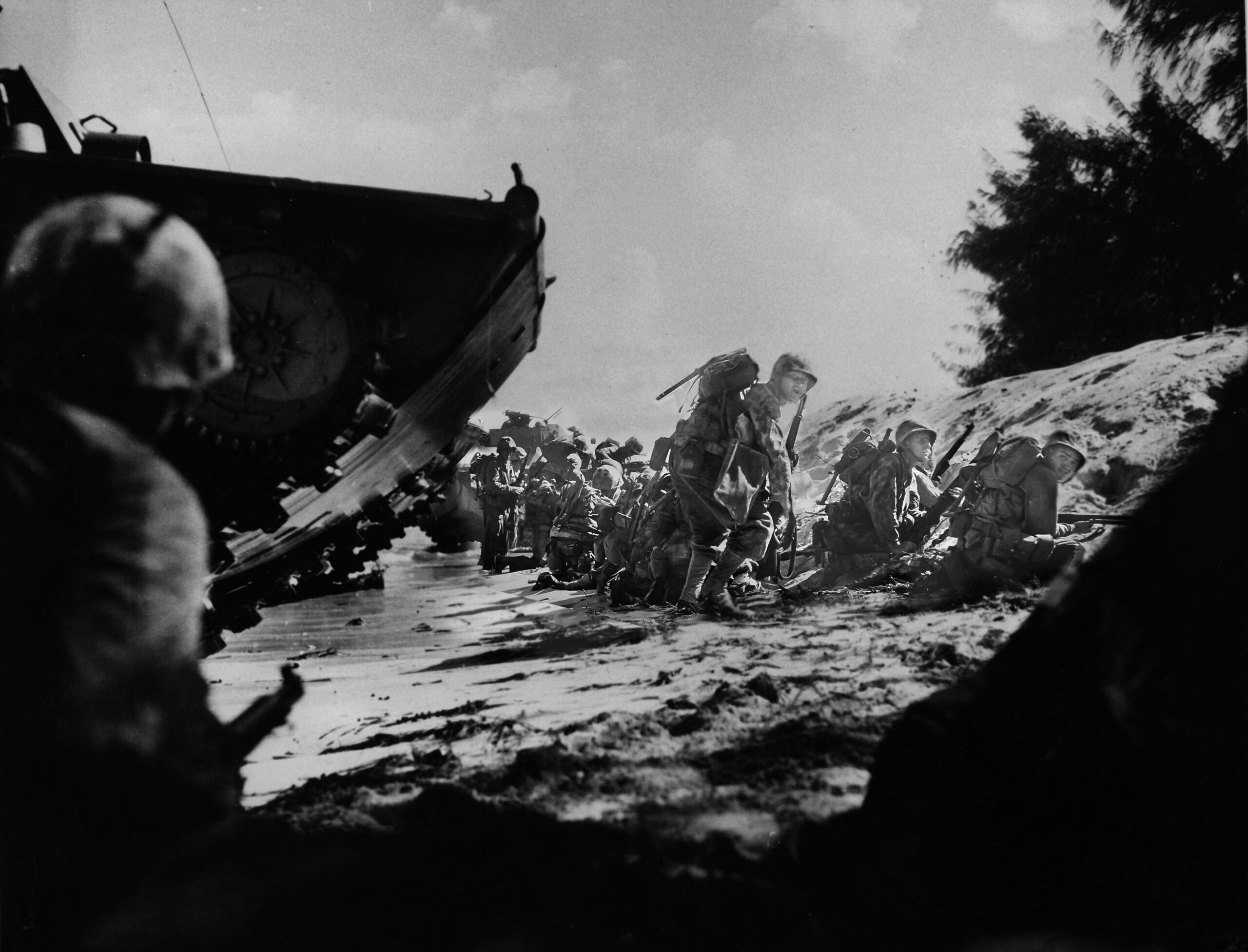This is my Uncle 2nd Lt. James Stanley Leary, Jr., who was killed on Saipan by the Japanese on July 6, 1944. He is the one standing.

Today I went to the Georgia National Cemetery located in Canton, GA. Due to the week’s rain, none of the American flags have been put on the gravestones.

This is how the cemetery will look once the flags are put in for the celebration of Memorial Day.

This is a great weekend to visit our national cemeteries around the country.

Our family cannot go to the cemetery and find my Uncle James Stanley Leary’s grave. While we know he was killed in Saipan; the fighting was so fierce that two other marines died trying to rescue his body. His body was never recovered.
Here is a guide to the emblems you will see on the headstones in the national cemeteries.



I suggest paying attention to all the different faiths that have sacrificed for our freedom.

There are even a variety of Christian markers.



A nickel means you and the deceased soldier trained together at boot camp. If you served with the soldier, you leave a dime. A quarter is significant because it means you were there when that soldier was killed.
So what happens to the coins after Memorial Day? It is collected, and the money is used for cemetery maintenance, the cost of burial for soldiers, or the care for needy soldiers.
Supposedly the tradition became popular here in the United States during the Vietnam war. It is believed it was a way to show respect without getting into an uncomfortable political discussion about a very controversial war.
In general, however, this tradition can be traced as far back as the Roman Empire. It was a way to give a buddy some money for the hereafter.

It may surprise the casual visitor at Arlington National Cemetery to see a rubber duck on a headstone or an old football helmet lying in the manicured grass of a fallen soldier’s grave.
But this new generation of warriors is frequently remembered with mementos like beer cans, teddy bears, and even tiny bottles of hot sauce. The message in the souvenirs is unknown but likely very personal.
I saw service members remembering their friends. This marine left this for his friend.
I waited until he paid his respects to get the close-up of the Symbol of the Corps. The Eagle, Globe, and Anchor emblem has been part of the uniform since 1868 and became the official emblem of the Marine Corps in 1955.
The eagle with spread wings represents our proud nation. The globe points to a worldwide presence. The anchor stands for naval tradition. Together, they represent a dedication to service in the air, on land, and at sea.
Here is a suggestion for you. Please take a photo and post it to social media with your reasons that this moved you to pause and share.
Honor those who sacrificed for our freedom through a photo and a short caption.

